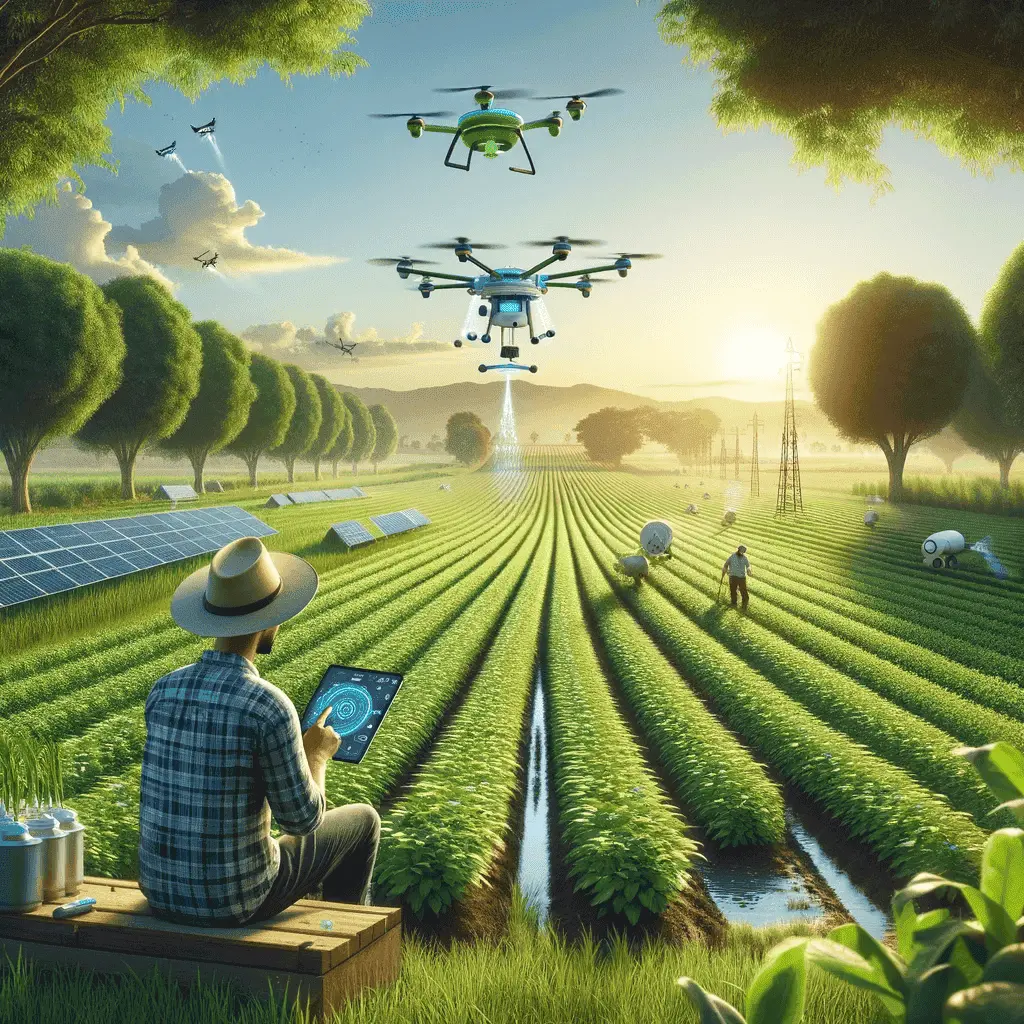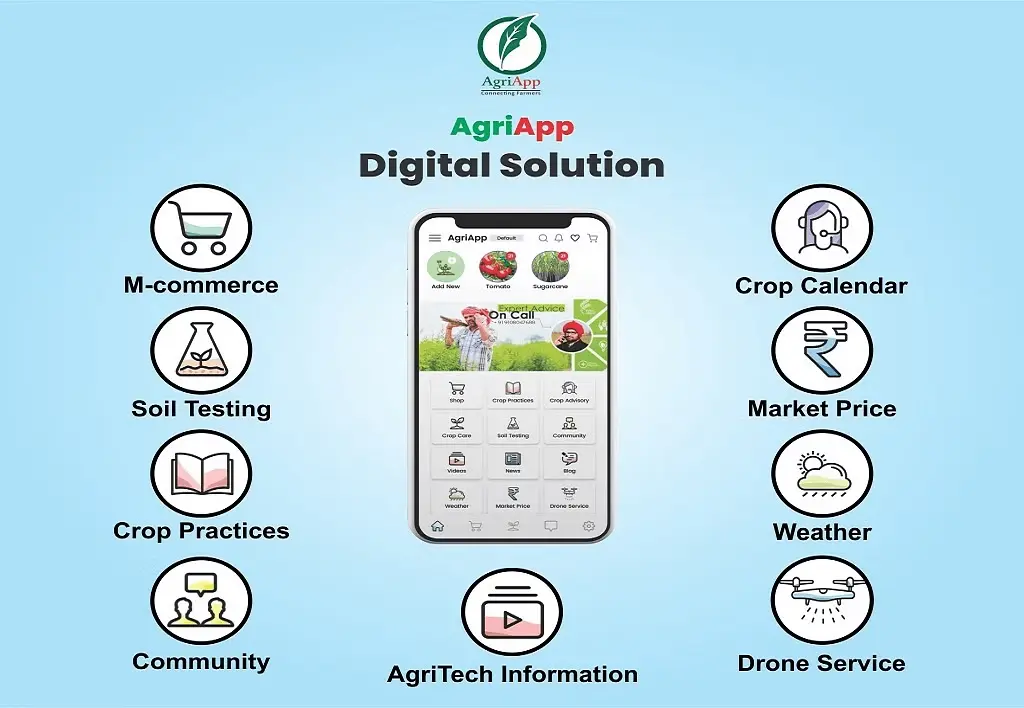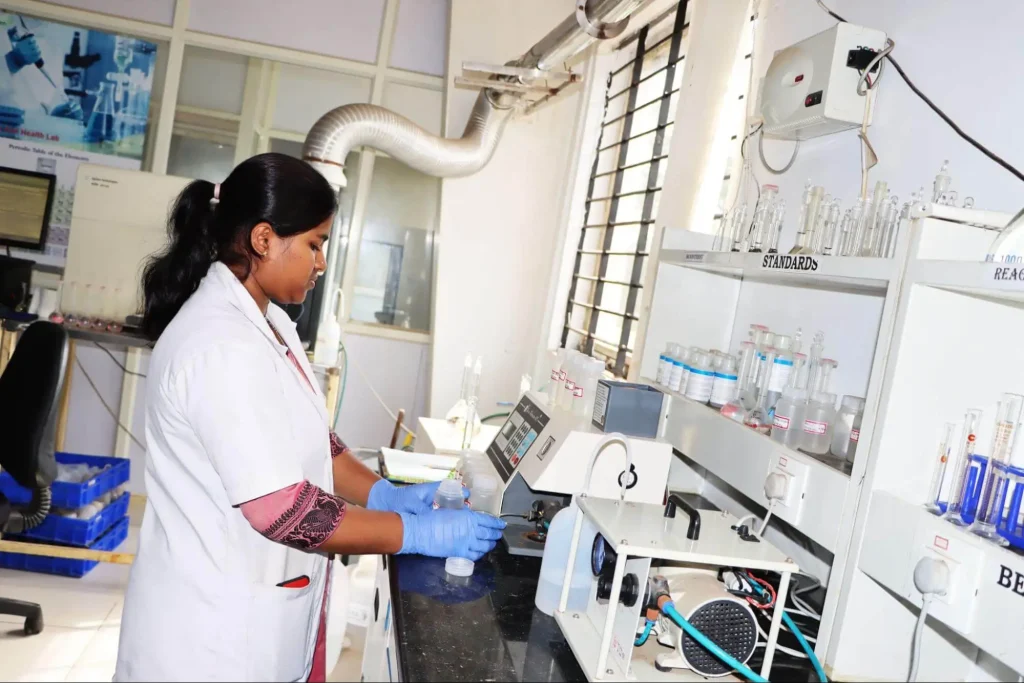In India, farmers are considered the main cornerstone of society, which is why they are going by the moniker “Annadatha” in the country. Agriculture is not only considered as an occupation but also a way of life. Still, agriculture and its allied sectors are one of the main employment providers employing about 158 million people and its contribution to the country’s gross domestic product is 18.3 percent. As part of the UN’s sustainable development goal “to end hunger,” the agricultural sector is a crucial player. This is where AgriTech startups are evolving as a hope.

In India, the agriculture sector is now facing challenges in terms of production, market linkages, supply chain, climate change, weather hazards, and so on, all of which result in large losses for farmers. Also ensuring food security for our ever-growing population is crucial. These problems prompted the agriculture sector towards embracing technology and thereby improve efficiency, sustainability and resilience.
What is AgriTech
Agritech refers to an ecosystem of enterprises, startups and solutions that leverage tech advancements to deliver products or services for increasing crop yields, enabling a range of efficiencies and ultimately boosting profitability for farmers across the agriculture value chain.
How Agritech Startups are Aiding Productivity
a. Market linkage – farm inputs: Digital marketplace and physical infrastructure to link farmers to inputs.
b. Biotech: Research on plant and animal life sciences and genomics.
c. Farming as a service: Farm equipment for rent on a pay-per-use basis.
d. Precision agriculture and farm management: Use of geospatial or weather data, IOT, sensors, robotics etc. to improve productivity. Farm management solutions for resource and field management, etc.
e. Farm mechanization and automation: Industrial automation using machinery, tools and robots in seeding, material handling, harvesting, etc.
f. Farm infrastructure: Farming technologies, such as greenhouse systems, indoor-outdoor farming, drip irrigation, and environmental control, such as heating and ventilation, etc.
g. Quality management and traceability: Post-harvest produce handling, quality check and analysis, produce monitoring, and traceability in storage and transportation.
h. Supply chain tech and output market linkage: Digital platform and physical infrastructure to handle post-harvest supply chain and connect farm output with the customers.
i. Financial services: Credit facilities for input procurement, equipment, etc. as well as insurance or reinsurance of crops.
j. Advisory/ Content: Information platforms online platform for agronomic, pricing, and market information.
AgriTech Startups In India: An Overview
Right now, India has over 1300 agriculture startups, which are actively employing artificial intelligence (AI), machine learning (ML), the Internet of Things (IoT), etc., to increase efficiency and productivity in the agriculture sector. The states of Karnataka and Maharashtra and the Delhi National Capital Region (NCR) are major hubs for Agri-startups in India.
Business Models in India’s AgriTech Startups
The business models within the AgriTech space be classified into:
a. Margin-based model: Segments such as market linkage – farm inputs, supply chain technology, and output market linkage operate through this model where the AgriTech player earns a margin by creating marketplace linkages at the input or output side, and by executing the promised services.
b. Subscription-based model: Agritech players operating in segments like precision agriculture and farm management as well as quality management and traceability offer a mix of hardware, software, and services-based solutions throughout the year and collect monthly or annual subscription charges from their customers.
c. Transaction-based model: Agritech companies dealing in the financial services segment follow this model based on the number of loans or insurance policies served.
AgriTech Segments in India: Through a Startup Example
We can analyse what are the segments in AgriTech in India through an example of AgriApp.
Why AgriApp
The answer lies in the fact that the company can be considered as a specimen of the AgriTech industry with its application of new-age technologies like IoT, drones etc.

a. Downstream AgriTechs
These are typically B2B or B2C platforms or brands that connect farmers with businesses or consumers.
b. End-to-end ecosystems
These are platforms that operate across the value chain and have a strong presence in a variety of areas, such as inputs and outputs.
AgriApp story: Through its e-commerce platform, Agriapp provides farmers with crop seeds and organic fertilizers (Criyagen). This enables the farmers to grow high seed varieties and better yields. Another input the company, AgriApp, provides is soil testing services which the farmers can avail through the mobile application. This equipped the farmers to get the best from their soil and seeds.
AgriApp is providing FinTech solutions to farmers in the form of credit, insurance and digital payment systems thereby addressing the essential financial needs of the farming community.
c. Digital solutions and precision AgriTech
These are digital solutions or products that give farmers services such as advising, precision farming, and sensor-based solutions.
AgriApp startup story: To support farmers in selecting crop varieties and better farming practices, this agritech startup has a dedicated crop advisory team. The advisory team is just a phone call away. AgriApp’s crop advisory support is available in ten regional languages of India.
With the help of satellite data and its analytics, AgriApp promotes precision agricultural tools among farmers which help them in applying the right amount of water, fertilizers and pesticides at the right time and place. Another important aspect of precision agriculture is the availability of weather forecasting data which AgriApp provides it through their mobile application.
d. Midstream AgriTech
These are agricultural technology companies that assist in the provision of supply chain solutions that improve efficiencies in areas such as logistics and warehousing.
e. Agribiotech
These are AgriTechs that use biotechnology to generate green and sustainable new products or ingredients such as food additives.
AgriApp story: Through its parent company Criyagen, AgriApp produces and promotes sustainable products such as biofertilizers. Criyagen Bio NPK Tablet is an example
f. Farm to fork
Direct-to-customer brands or platforms that connect farmers to end consumers.
g. Upstream AgriTechs
B2C platforms for input linkages, for categories like seeds, nutrition, agrochemicals, etc.
AgriApp story: The app through its e-commerce platform provides farmers with seed varieties, and biochemical and biofertilizers.
h. Agriculture mechanization/automation
Firms that supply various automation technologies or certain types of machines as a service for use on farms.
Investment Landscape: What Has Been Achieved So Far
Agriculture technology (AgriTech) in India is in its initial stage and only penetrated 1 per cent of its potential market value. But it is steadily seeping into the agricultural scape due to government initiatives, investors’ interest and farmers’ willingness to adopt new technologies. The investments done in the sector show its gradual growth among the startups:
Growing segments within AgriTech in India
Out of the total projected AgriTech market potential of US$24 billion, the supply chain technology and output markets segments have the highest potential in India, worth US$12.1 billion, followed by financial services (US$4.1 billion), precision agriculture and farm management (US$3.4 billion), quality management and traceability (US$3.0 billion), and market linkages-farm inputs (US$1.5 billion).

Policymaking in AgriTech: Government’s Role
India’s government has also taken several policy steps and conducted pilots to foster technology and innovation in the agricultural sector:
a. Easier digital reach through farmer collectivization
The government has promoted farmer producer organisations (FPO) which collectivize the fragmented farmer base, helping AgriTech companies to easily access and scale up their business models.
b. Development of the Agristack
The Indian government is creating a unified database of agricultural data sets called agristack, which will be linked to farmers based on their land holdings. This will enable AgriTech companies to customize offerings and products based on farmers’ needs, which vary by land size, crop sown, and soil conditions.
c. Digital soil-health cards
A digital soil health card program entails mapping soil composition and quality at the farmer level. It could help AgriTech companies in India to promote precision-farming initiatives and tailor offerings for specific farmer groups.
d. Digitally enabled direct benefit transfer in fertilizer sales
This initiative directly transfers subsidies for fertilizers and other goods to the farmer. It authenticates the farmer’s identity at points of sale and through verification. It could significantly encourage the adoption of fertilizers and reduce leakages in transportation, maintaining affordability for smallholder farmers.
e. National Agriculture Market (eNAM)
This pan-India electronic online trading portal connects existing Agriculture Produce Market Committee (APMC) mandis, forming a unified national market for agricultural commodities that ensures better prices for farmers through the transparent auction process.
f. Agricultural Accelerator Fund and digital public infrastructure
The government has recently announced a new fund for promoting the AgriTech ecosystem, potentially seeding new start-ups that may increase digital adoption and the range of digital solutions available to farmers. Additionally, the government announced its intent to build an open-source digital public infrastructure that will likely support AgriTechs with relevant information services across the value chain.
These initiatives are building an AgriTech ecosystem in the country, supporting farmers in areas where they need the most help.

Opportunities For Agritech Startups
a. Large number of smallholdings
Smallholdings account for about 80% of Indian farms with less than 2 hectares of land. It is humanly difficult to reach all of these farmers and provide access to the most up-to-date farm-related information in order to enhance production or make farming more efficient. AgriTech start-ups can have a disproportionate influence on the lives of smallholders by offering access to loans, insurance, inputs, and market connectivity at a lower cost and with more efficiency. Furthermore, these start-ups have the capacity to contact and communicate with millions of farmers across varied geographies.
b. Impact of climate change
Weather forecasting has gotten more precise with the emergence of sophisticated AI and ML techniques combined with satellite images. As a result, an advisory based on the weather situation will assist farmers in mitigating weather-related risks. As a result of climate change, AgriTech firms may manage weather-related hazards and advise on climate-resilient agriculture practices.
c. Increased mobile internet and smartphone penetration
This provides a unique opportunity for AgriTech start-ups to digitally interact with smallholder farmers through their unique and innovative ways.
d. Consumer behaviour
Consumer preferences for clean, chemical-free, and sustainably derived food have grown in line with urbanisation and money. Organic food is becoming more popular among health-conscious consumers willing to pay a premium. It provides an exceptional opportunity for AgriTech start-ups to address concerns such as manufacturing clean and chemical-free goods, supply chain issues, and traceability. Additionally, by implementing the latest technologies, it will assist smallholders in producing responsibly while reassuring consumers that their products are pure, unadulterated, and derived from sustainable sources.
e. Increased support from the government and incubators
At the implementation and policy levels, the government is also enthusiastic about AgriTech. AGRI UDAAN, Centre for Innovation Incubation and Entrepreneurship (CIIE), a-IDEA (Association for Innovation Development for Entrepreneurship in Agriculture), ICRISAT (International Crop Research Institute for the Semi-Arid Tropics), T-Hub, and Agri-Tech Start-up Accelerator CIE, Hyderabad, MANAGE Agri-clinics and Agri-Business Centre Incubation centre are some of the crucial accelerators and incubators for the AgriTech sector in India.
What Lies Ahead: The Future
AgriTech startups from India are gaining gradual recognition from other countries, proof of this is that in 2023, one of India’s precision agriculture startups, Fyllo, entered into a strategic partnership with Spain-based Terraview, a global climate software-as-a-service firm, to improve the productivity of wine producers across the US, Australia, and Spain. This collaboration has made Fyllo—the first Indian AgriTech company to expand globally.
The Indian government is also very supportive of realising the potential of the sector. In her 2023 Budget speech, for instance, the finance minister announced the launch of an accelerator fund to boost AgriTech startups, and support rural entrepreneurs by providing them with the necessary tools and technologies. With a market value of US$ 24 billion, India’s AgriTech sector has a market penetration of 1%. It represents the enormous unexplored market within which the AgriTech startups have a significant development prospect.